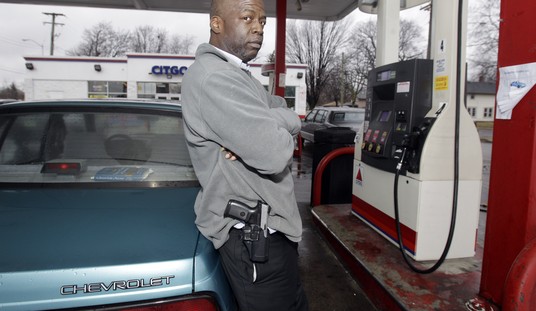As the recent election results suggest, Americans are beginning to understand we’re in the midst of a Constitutional crisis. In fact, not since the last major assault on the Constitution – the midterm elections of 1938 – has such a legislative turnover occurred.
But neither case is actually a crisis created by left vs. right; rather, it is a battle between those who argue for a limited Federal government and those who believe in a powerful national government. In many ways, this mirrors the original Constitutional Convention.
So if the Constitutional Convention attendees had different viewpoints such as those displayed in the 2010 election, how could a group of Founders that included deists and ministers agree on something as contentious as separation of church and state? Simple – they believed the U.S. Constitution defined the Federal government’s role in relation to the individual states as well as the prescriptive legislative (not judicial) process for modifying that defined role if necessary.
In the case of the Establishment Clause, the Founders clearly intended for religious and spiritual beliefs to actively influence individuals in their governmental roles. In other words, the separation of church and state is a myth to which the Founders would NOT have subscribed and we’ll prove it.
In 1787, as the delegates to the Constitutional Convention assembled to create the U.S. Constitution, no less than seven states had officially established state religions or denominations. These included:
• Connecticut (Congregational church)
• Delaware (Christian faith)
• Maryland (Christian faith)
• Massachusetts (Congregational church)
• New Hampshire (Protestant faith)
• New Jersey (Protestant faith)
• South Carolina (Protestant faith)
In today’s society, however, we often witness lawsuits seeking to prevent religiously affiliated groups from utilizing state or local schools or other buildings, or displaying holiday decorations on public spaces. The lawsuits, often brought in the name of freedom of (from) religion, claim that such uses are illegal and violate the Constitution’s 1st Amendment, or the Establishment Clause.
While over the years case law has held this to be a generally accurate claim, this is NOT how the Founders viewed the 1st Amendment. The fact is the lawyers bringing these cases couldn’t be more wrong from a Constitutionalist perspective.
The commonly accepted basis for many of these lawsuits rests on then-President Thomas Jefferson’s famous 1802 letter to the Danbury Baptists. In that letter, Jefferson introduced the oft-cited “wall of separation of between Church & State.” Yet did you know that as a Virginia legislator, Jefferson helped create a bill calling for a statewide day of fasting and prayer? How does this reconcile?
It turns out quite easily when we understand the Founders’ intent. Supreme Court Justice Joseph Story, nominated by President James Madison (aka “Father of the Constitution”), writes this in his Commentaries on the Constitution.
“It was impossible that there should not arise perpetual strife and perpetual jealousy on the subject of ecclesiastical ascendancy, if the national government were left free to create a religious establishment. The only security was in extirpating the power. But this alone would have been an imperfect security, if it had not been followed up by a declaration of the right of the free exercise of religion, and a prohibition (as we have seen) of all religious tests. Thus, the whole power over the subject of religion is left exclusively to the state governments, to be acted upon according to their own sense of justice, and the state constitutions.” (emphasis added)
Further, Jefferson himself, in drafting the Kentucky Resolutions of 1798, stated in Section 3, “that no power over the freedom of religion, freedom of speech, or freedom of the press being delegated to the United States by the Constitution, nor prohibited by it to the States, all lawful powers respecting the same did of right remain, and were reserved to the States or the people.” (emphasis added)
In referring to the U.S. Constitution’s 1st Amendment, Jefferson also states in this same Section 3, “thereby guarding in the same sentence, and under the same words, the freedom of religion, of speech, and of the press: insomuch, that whatever violated either, throws down the sanctuary which covers the others, arid that libels, falsehood, and defamation, equally with heresy and false religion, are withheld from the cognizance of federal tribunals.” (emphasis added)
These statements show, then, that Jefferson believed the Federal (general) government was to be excluded from any involvement in religious affairs, including preventing the Supreme Court from involvement, except for religious actions that violate another person’s right to their individual religious practices. However, this was never intended to prevent state and local governments from having a “wall of separation.”
Consider the following from Jefferson’s second inaugural address, delivered in 1805 (after the Danbury letter).
“In matters of religion I have considered that its free exercise is placed by the Constitution independent of the powers of the General Government. I have therefore undertaken on no occasion to prescribe the religious exercises suited to it, but have left them, as the Constitution found them, under the direction and discipline of the church or state authorities acknowledged by the several religious societies.”
As President, then, Jefferson explicitly stated the Founders intent that religious issues were the sole purview of the states. So states then have the responsibility to preclude religious activities from public properties? Quite the contrary; the Founders argued for the INCLUSION of religion and morality into public life – just not prescriptively so.
In 1787 – the same year the Constitution was drafted and approved – the same U.S. Congress passed the Northwest Ordinance. Article 3 of that document states, “Religion, morality, and knowledge, being necessary to good government and the happiness of mankind, schools and the means of education shall forever be encouraged.” With these words, it becomes apparent the Founders felt the citizenry should be educated in both religion and morals.
However, they expressed their desire to constrain what religious and moral lessons were taught to those that were universal, meaning not biased by any particular denomination, sect, or creed. As Jefferson stated in the Bill for Establishing Elementary Schools in Virginia, “No religious reading, instruction or exercise, shall be prescribed or practiced inconsistent with the tenets of any religious sect or denomination.”
Further contradicting the restrictions on religious activities in public spaces, Jefferson stated the following in an 1822 letter.
“In our village of Charlottesville, there is a good degree of religion, with a small spice only of fanaticism. We have four sects, but without either church or meeting-house. The court-house is the common temple, one Sunday in the month to each. Here, Episcopalian and Presbyterian, Methodist and Baptist, meet together, join in hymning their Maker, listen with attention and devotion to each others’ preachers, and all mix in society with perfect harmony.”
Not only does this observe a religious tolerance for different sects, it documents their use of public facilities. The key is that none of the sects is excluded from use of the public facilities.
Reading Jefferson’s own words and those of other Founders, it is apparent Jefferson’s intended “wall of separation” applied strictly to the Federal government. In fact, the states were to positively educate in religious and moral lessons, just ones that transcended all sects and denominations.
Discussion of those specific religious and moral lessons is a topic for another day, but you could correctly gather the 10 Commandments, by their prominent display at most court houses of the day, were some of those foundational beliefs. Certainly, the Boy Scouts would have been encouraged to use public facilities and Christmas decorations in front of city hall would have been celebrated rather than the subject of lawsuits.
Revisionist historical analysis and texts have so twisted the 1st Amendment the Founders would scarcely recognize its application to our current society. Educating ourselves in the Founders’ intent, not just for the 1st Amendment but also for the entire Constitution, will help resolve our current Constitutional crisis and steer us back on the path toward that “shining city on the hill.”








Join the conversation as a VIP Member